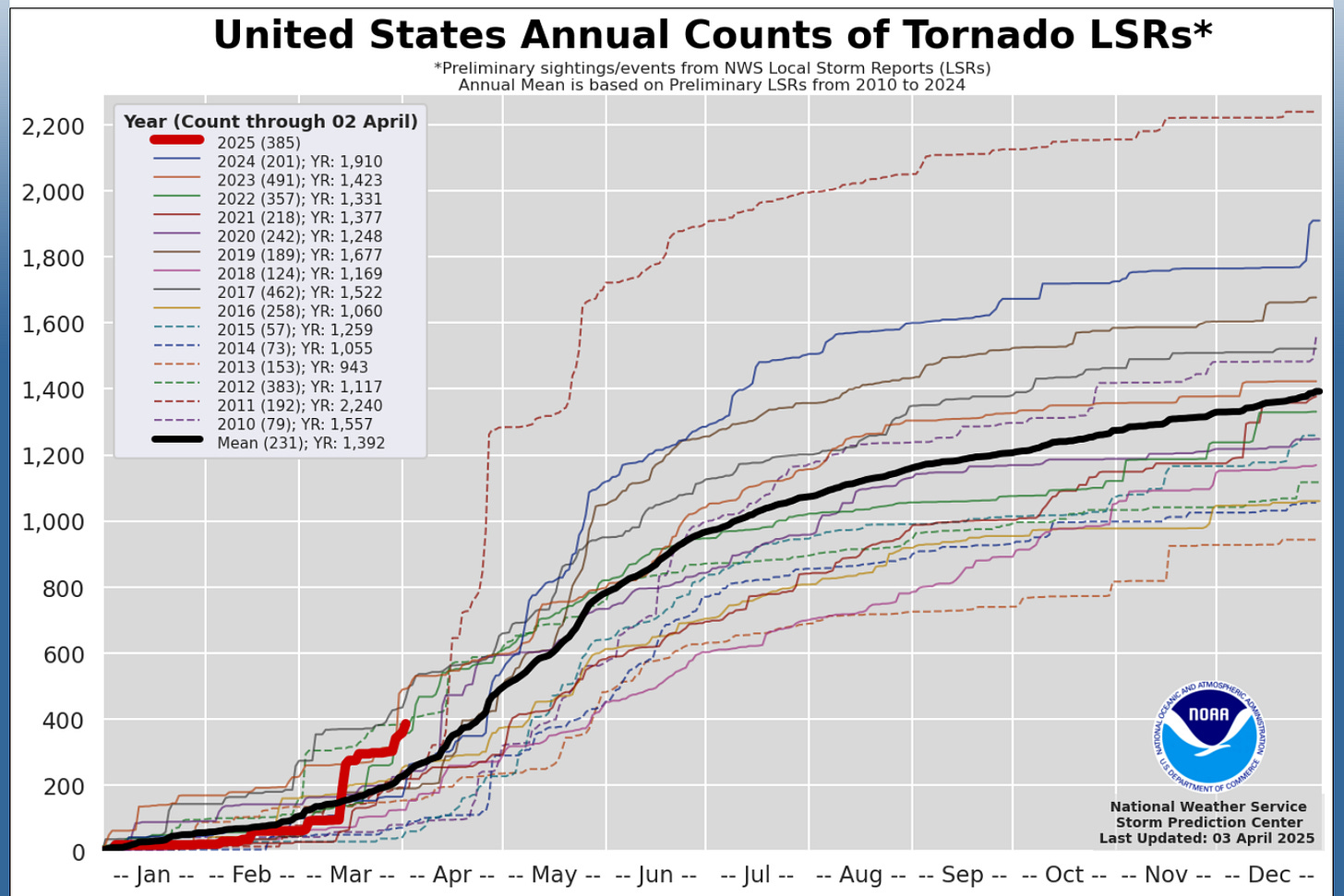As tornado season returns once again (for the third consecutive year I've covered it), the predictable media claims linking severe weather to climate change roll in like clockwork. First and foremost, my sympathies go out to all those who have recently lost their homes or loved ones in the latest round of tornadoes sweeping parts of the Midwest and Southern United States today. These events are devastating, and each affected community deserves our support.
However, acknowledging human suffering and loss does not require accepting flawed or exaggerated narratives. Blaming these tragic weather events on anthropogenic CO2 emissions is, in my view, a distraction and a scientific cop-out that prevents us from addressing the real challenges of preparedness, early warnings, and infrastructure resilience.
In my previous pieces, "It's Tornado Season Again..." and "It's Tornado Season Again, Again...", I examined the claims that climate change is increasing both the frequency and intensity of tornadoes. In each article, the data clearly demonstrated otherwise. Small tornado counts increased only due to improved detection methods, while the most destructive tornadoes (EF3+) have actually declined since reliable record-keeping began.
Despite repeated assurances by climate scientists and media alike that all extreme weather events would intensify and become more frequent, the data simply doesn't back it up... especially when it comes to tornadoes.
New Season, Same Story?
Last year, the tornado season was particularly active, with 1,796 tornadoes recorded, well above the historical average.
Yet despite this higher frequency, 2024 notably continued the now decade-long drought in the most severe category of tornadoes: EF5. Media reports frequently highlighted the increased frequency of tornadoes as evidence of a climate crisis, conveniently omitting the ongoing absence of the most violent and destructive tornadoes.
Let’s look briefly at the updated 2025 tornado count data:
As you can see, the total tornado count for 2025 remains within historical averages, although currently above the mean due to recent outbreaks. Once again, a handful of significant outbreaks dominated news coverage, reinforcing public perceptions that tornadoes are becoming more frequent and severe. But when adjusted for historical consistency and technology changes, the supposed increase evaporates.
One particularly egregious media example comes from a recent article in The Guardian, which states, "…the severity of such events is being amplified by the climate crisis, scientists have said." Such reporting disregards both historical tornado data and the explicit scientific uncertainty outlined by climate authorities.
The EF5 Drought: A Reality Check for Climate Alarmism
Now, let’s turn back to something truly remarkable... and notably absent from media headlines: the unprecedented drought in EF5 tornadoes, the most powerful category of twisters. According to a new study published by the American Meteorological Society (AMS), we have now gone over 11 years without a single EF5 tornado in the United States.
Yes, over a decade without the most violent tornado classification... a phenomenon climate catastrophe narratives simply fail to explain. Climate scientists and advocates have repeatedly insisted that extreme weather of every kind, especially the most intense storms, would increase dramatically due to human-driven warming.
Yet here we are, amidst a historical drought in the occurrence of the most extreme tornado events.
🔒 Want to know exactly how this EF5 drought undermines climate alarmist claims and why it should dramatically reshape how we talk about severe weather and climate policy?
🔒 Subscribe below to unlock the rest of this revealing analysis and access subscriber-only data and charts that clearly demonstrate why the climate narrative on tornadoes is collapsing.
Keep reading with a 7-day free trial
Subscribe to Irrational Fear to keep reading this post and get 7 days of free access to the full post archives.







